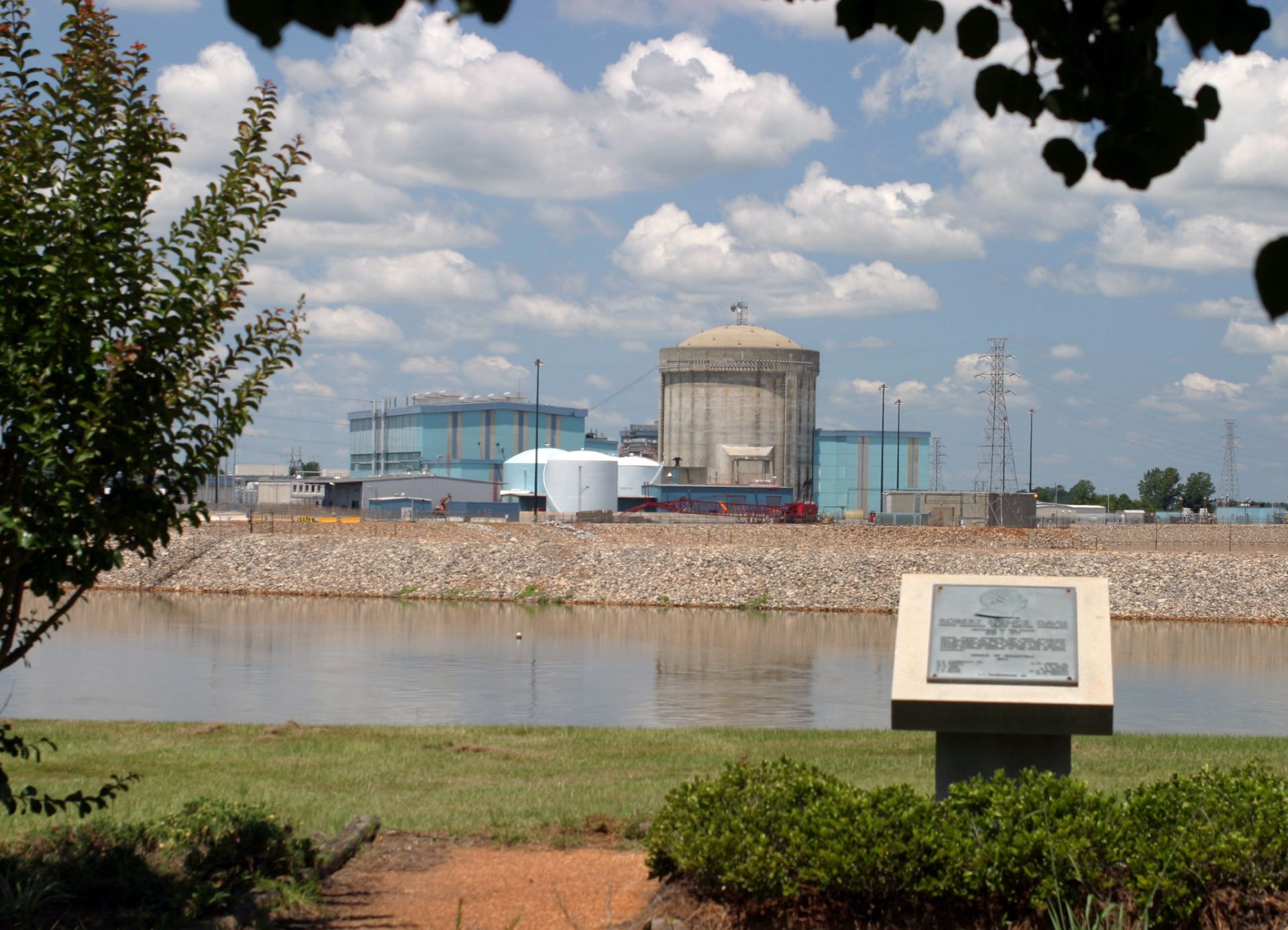European Commission to launch SMR alliance

The European Commission intends to establish early next year an industrial alliance focused on small modular reactors, EC energy commissioner Kadri Simson announced last week.


The European Commission intends to establish early next year an industrial alliance focused on small modular reactors, EC energy commissioner Kadri Simson announced last week.

Pacific Gas and Electric earlier this week filed a license renewal application with the Nuclear Regulatory Commission to extend the lifetime of California’s Diablo Canyon Nuclear Power Plant by up to 20 years. Diablo Canyon generates 8 percent of the state’s clean electricity, providing carbon-free electricity to 3 million people.

Utah Associated Municipal Power Systems (UAMPS) and NuScale Power announced November 8 that they have mutually agreed to end the Carbon Free Power Project (CFPP)—a plan to build a set of 77-MWe pressurized water reactors, called NuScale Power Modules, at Idaho National Laboratory. The reactors were intended to provide power to INL and UAMPS customers in Utah and surrounding states with an anticipated start date of 2029.

The second of the two VVER-1200 pressurized water reactors at Belarusian, the sole nuclear power plant in Belarus, has entered commercial operation, Russia’s state-owned atomic energy corporation Rosatom announced last week.
This past January, Wilmington, N.C.–based GE Hitachi Nuclear Energy and Canadian firms Ontario Power Generation, SNC-Lavalin, and Aecon signed a contract for the deployment of the American firm’s BWRX-300 small modular reactor at OPG’s Darlington nuclear plant in Clarington, Ontario.
Bruce Power, operator of Ontario’s eight-unit Bruce nuclear plant, has notified Canadian regulators of its intent to launch an impact assessment (IA) for Bruce C—the company’s name for potential new nuclear generation at the site.

The initial loading of nuclear fuel into the Kakrapar-4 reactor core has begun, the Nuclear Power Corporation of India Ltd. has announced. Permission for fuel load was granted by India’s Atomic Energy Regulatory Board “after carrying out stringent safety and security reviews,” according to the NPCIL.
.jpg)
To help speed up commercialization of its eVinci microreactor, Westinghouse Electric Company this week launched a new design and manufacturing facility for the project near downtown Pittsburgh, Pa. Located in the borough of Etna, the 87,000-square-foot eVinci “accelerator hub” will be home to engineering and licensing operations, testing, prototype trials, business development, and sales, Westinghouse said in an October 24 announcement, adding that the facility will include manufacturing space for producing the “innovative heat pipes that are central to the eVinci technology.”

Explosions near the Khmelnytskyi nuclear power plant in western Ukraine early Wednesday shattered windows at the facility and temporarily cut off power to some off-site radiation monitoring stations, the International Atomic Energy Agency reported on October 25.

The Unit 3 reactor at Slovakia’s Mochovce nuclear power facility has completed the commissioning process, becoming a full-fledged member of the country’s nuclear fleet, plant owner Slovenské Elektrárne has announced.

Among the typical bustle of outage activities at the Surry Power Station in Virginia during the fall of 2022, an unfamiliar sound broke through the commotion. Even with hearing protection in place, a faint whir thunk, whir thunk, whir thunk could be heard, announcing the arrival of the latest innovation in nuclear power. Dominion Energy, owner and operator of Surry, had combined new technologies from robotics company Boston Dynamics and radiation detection company Gamma Reality Inc. to provide radiological condition monitoring throughout the plant that could protect technicians from radiation exposure. The result? A quadruped robot with real-time 3D radiation mapping and data fusion capabilities.
The Nuclear Regulatory Commission has docketed an application from Dominion Energy South Carolina for the subsequent license renewal (SLR) of the V. C. Summer plant’s Unit 1 reactor. The action was announced in Monday’s edition of the Federal Register.
Operating costs for nuclear units have grown significantly since the start of the commercial nuclear power industry. For nuclear power generation to remain competitive, process efficiencies and innovations will need to be introduced. The challenge for any change is to improve the safe operation of the nuclear unit. An area of opportunity to reduce operating costs while improving operational safety is through upgraded fuel design and manufacturing. At Southern Nuclear, the pressurized water reactor fuel engineering team worked with Westinghouse to implement the PRIME fuel features, where simple improvements would yield safer operation and long-term cost-savings due to a more robust fuel design. Implementing the PRIME fuel ensures that the operator’s burden from fuel performance is minimized while keeping the reactor unit in a safe operating condition.

A couple of years ago, my wife and I were looking to purchase a new car. But just as we made that decision, major pricing inflation and supply constraints became an issue. So, we decided to wait. We also knew that we would need new tires before we could sell our current vehicle. Instead of buying the best quality (and expensive) tires, we got the much cheaper ones, knowing we would only use them for a brief period. Why invest in an asset that won’t be serving its purpose for you that much longer, right?

The Nuclear Regulatory Commission last week issued a preliminary “yellow” finding to Dominion Energy for failing to resolve a two-decade-long problem with cracks in the piping of the V. C. Summer plant’s emergency diesel generator (EDG) fuel oil system.

Ken Petersen
president@ans.org
I have jumped on the fusion power bandwagon! Power from fusion is going to happen. When I look at it, there are several factors that reinforce this. Technology has advanced and moved from basic science/research to engineering solutions. Several breakthroughs in supportive technologies have made fusion power plants a possibility. Finally—and most importantly—the private sector is heavily involved and investing to help move engineering solutions forward. This has resulted in a few dozen fusion companies developing different technologies with the same power generation goals. It is very reminiscent of the development of LW fission reactors in the 1950s and ’60s.
Technology has advanced in regard to materials and especially high-temperature superconducting magnets, high-energy lasers, and computer modeling. These improvements have allowed machines to become smaller and achieve the density, temperature, and time needed for fusion to occur.

The International Atomic Energy Agency has released the 2023 edition of its annual look at nuclear’s prospects in the coming decades—Energy, Electricity and Nuclear Power Estimates for the Period up to 2050—revising its global growth projections upward for a third consecutive year.

Matt Rasmussen
Do you remember the days when nuclear was a contractor’s dream? When craftworkers could work outages every fall and spring at a high wage and make enough to take summers off? When companies had to turn down craftworkers looking for outage work because there were more people than positions? Well, those days are far behind us. How many of us struggle every year to fill our outage billets for pipefitters, boilermakers, and electricians? How many of us see return rates of less than 50 percent for some sites?
Industrial growth and demand in the United States have skyrocketed over the past 10 years in no small part due to our ability to provide reliable and low-cost power. The Tennessee Valley region’s population is growing at three times the national average. Nashville is growing at the rate of one Chattanooga—that is, 180,000 people—every four years.

Maintenance can mean no more than keeping the status quo. But plant maintenance programs at U.S. nuclear power plants do that and then some. Even the programs are themselves maintained and improved—and so a long-lived nuclear fleet has improved with time. Read on.

Georgia Power, primary owner of the Vogtle nuclear plant, announced last Friday that it will pay $413 million to settle a lawsuit brought against it last year by plant co-owner Oglethorpe Power Corporation.